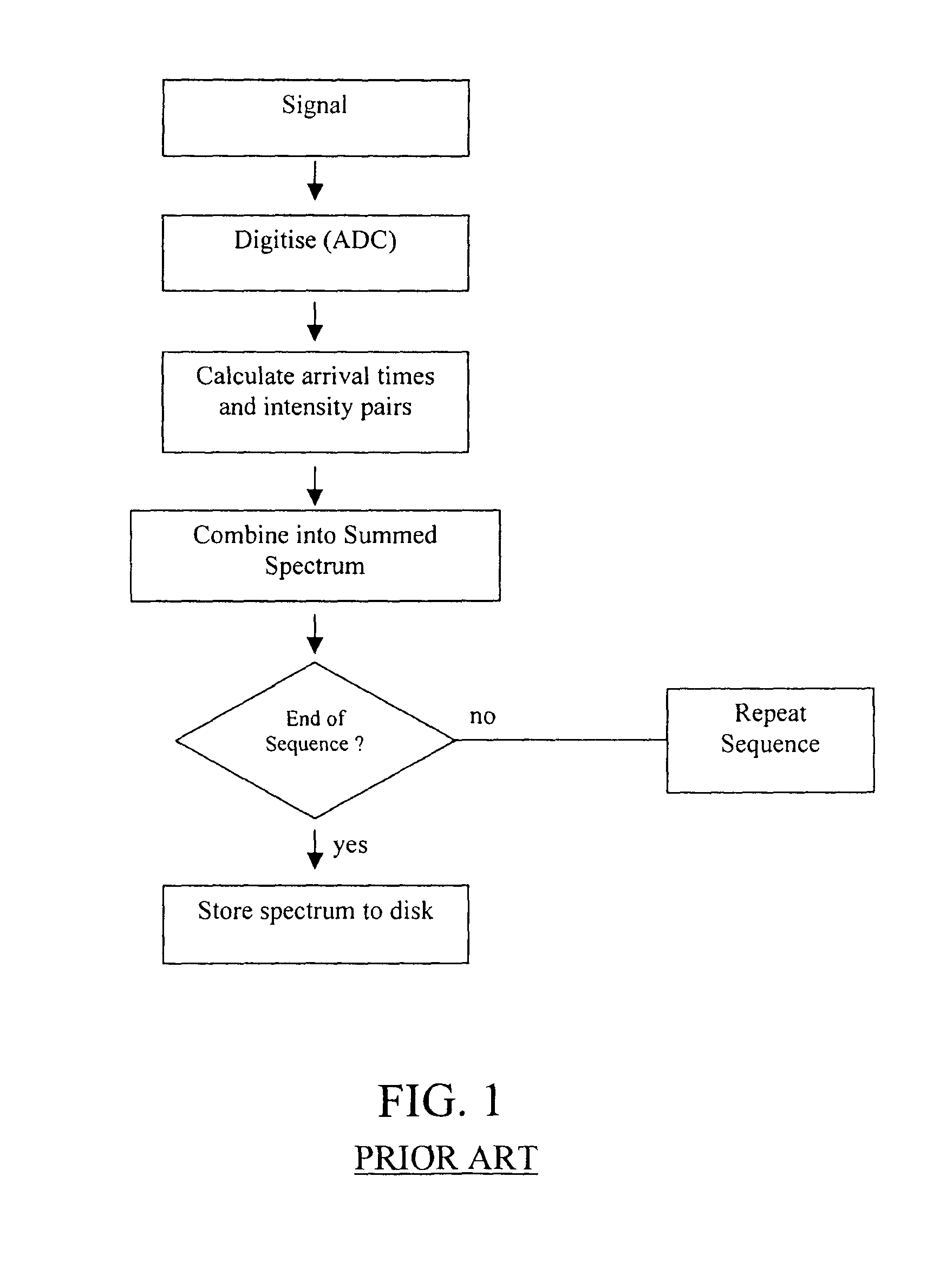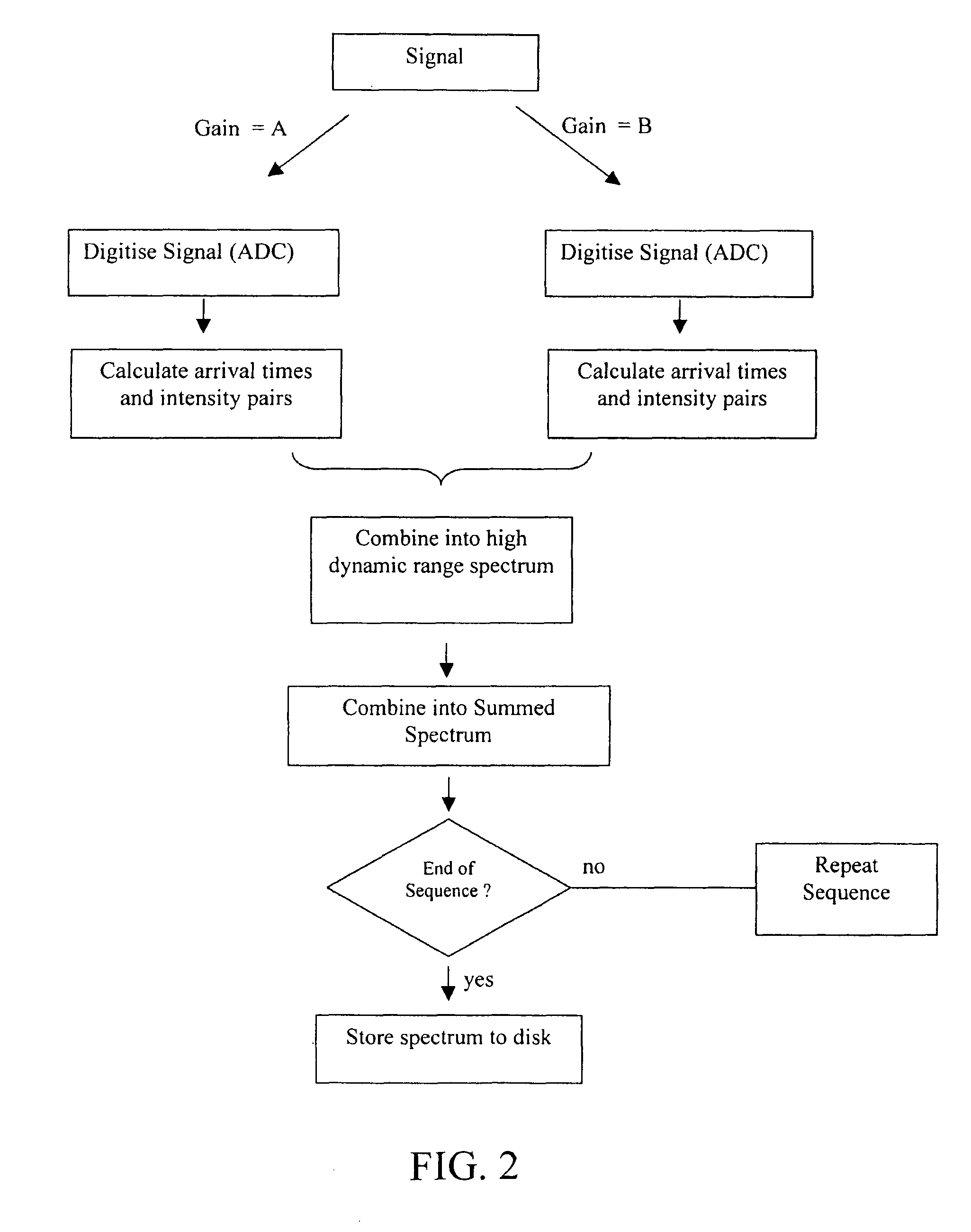Mass spectrometer
a mass spectrometer and mass spectrometer technology, applied in mass spectrometers, calibration apparatus, particle separator tubes, etc., can solve the problems of significant number of ion arrival events not being recorded, significant time interval or dead-time, and inability to distinguish between signals, etc., to achieve increased dynamic range, increased dynamic range, and increased dynamic range
- Summary
- Abstract
- Description
- Claims
- Application Information
AI Technical Summary
Benefits of technology
Problems solved by technology
Method used
Image
Examples
Embodiment Construction
[0181]A flow diagram illustrating a known Analogue to Digital Converter ion detector system is shown in FIG. 1. An input transient signal resulting from a trigger event is digitised and converted into arrival time and intensity pairs at the end of each transients predefined record length. A series of arrival time and intensity pairs are combined with those of other mass spectra within a predefined integration period or scan time to form a single mass spectrum. Each mass spectrum may comprise many tens of thousands of transients.
[0182]A significant disadvantage of the known method is that it has a limited dynamic range and at relatively high signal intensities the Analogue to Digital Converter will suffer from saturation effects. It is also difficult to determine with any certainty whether or not the signal within an individual transient has saturated the Analogue to Digital Converter especially if the input signal changes significantly in intensity during the scan time. This frequen...
PUM
 Login to View More
Login to View More Abstract
Description
Claims
Application Information
 Login to View More
Login to View More - R&D
- Intellectual Property
- Life Sciences
- Materials
- Tech Scout
- Unparalleled Data Quality
- Higher Quality Content
- 60% Fewer Hallucinations
Browse by: Latest US Patents, China's latest patents, Technical Efficacy Thesaurus, Application Domain, Technology Topic, Popular Technical Reports.
© 2025 PatSnap. All rights reserved.Legal|Privacy policy|Modern Slavery Act Transparency Statement|Sitemap|About US| Contact US: help@patsnap.com



